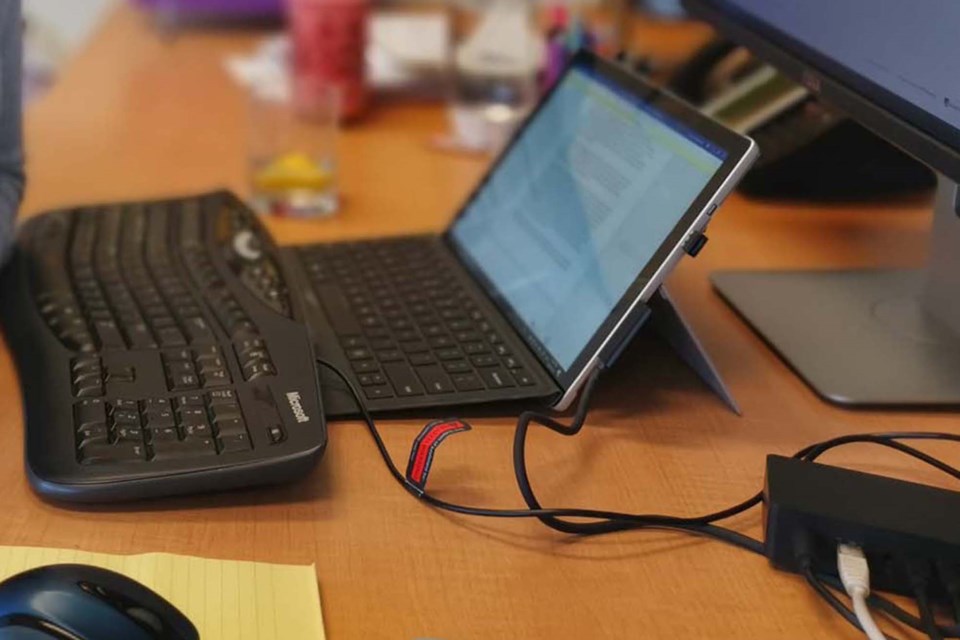When the country moved to online learning as the pandemic began, communities in rural Alberta were not able to due to inadequate Internet service.
In Sexsmith, 20 minutes north of Grande Prairie, Mayor Kate Potter said the Internet is intermittent, which meant some students in the region couldn’t do online courses.
Students had to be brought into the schools, still doing it virtually, but from a device inside the school, using the school’s Internet service.
“They didn't have the connectivity at home to make it happen,” Potter said.
Across rural Alberta, Internet service is a perennial problem, with slow upload and download speeds or residents who don't have access to a service at all.
On Thursday, Alberta Municipalities, formerly known as the Alberta Urban Municipalities Association, voted to advocate for a provincial broadband strategy, which will need measurable goals, concrete actions, and a dedicated budget that recognizes broadband as an essential utility.
The digital divide is increasingly limiting access to economic, health, social, and education opportunities in Alberta, said the resolution.
In Hythe, County of Grande Prairie Coun. Brian Peterson said the Internet in the community is not consistent. Internet providers say their service is adequate, but Peterson said that is only if a few people are using it.
Once more members of the community hop online, the Internet slows to a halt for everyone.
“It was so bad that our village could not sometimes do online banking,” said Peterson.
But Hythe, which has now dissolved into the surrounding County of Grande Prairie, decided to build its own infrastructure.
“We own our fibre optic network. So we now have a gigabyte of service to every house, every business, too,” said Peterson, who was the former mayor of Hythe.
The community partnered with a supplier: the town owns 70 per cent and the supplier owns 30 per cent.
In the community of Clive, a village 15 minutes east of Lacombe, Internet service is “very terrible.” Residents don’t have access to high-quality Internet at all, say local councillors.
“COVID-19 definitely has made it more noticeable to our communities, with people having to work from home, with the kids having to do schooling from home,” said Coun. Norma Penney
Service was so bad some students couldn’t go to virtual class with their video on, so teachers couldn’t tell who was attending classes, Penney said.
Since students would lose Internet connection if they turned their video on, some local university students attending courses online had to drop out of their classes for the semester, because several courses required video attendance, Penney said.
Students who felt isolated and sought mental-health services online would see the service drop in middle of a session, which made them feel more alone, said Mayor Luci Henry.
Seniors in the community also struggled, said Henry, because they can't navigate some of the additional technology required to boost services.
Access to Internet services has been a problem in rural Alberta for years. This summer the province committed $150 million to help fix the problem, and Premier Jason Kenney said he hopes the money will inspire the federal government and private sector to bring the total investment up to $1 billion.
“Our goal is to put together but a billion-dollar package between us, the feds, and private-sector telecommunications companies. This is the initial investment that we hope will get the ball rolling on that,” he said during the announcement.
Right now, 80 per cent of Indigenous communities in Alberta don’t have access to reliable Internet, and roughly 67 per cent of rural communities can’t get a stable connection.
“This just is no longer acceptable,” Kenney said.
Roughly 12 per cent of Alberta families, or around 200,000 households, lack the basic speeds the federal government has said are required for adequate Internet service.
While that 12 per cent sounds like a small number, those homes are in rural and Indigenous communities, and matter as much as the homes in the rest of the province, Kenney said in the summer.
Paul McLauchlin, president of the Rural Municipalities of Alberta, said in the summer that, based on their own testing in the province, even fewer communities have access to appropriate Internet speeds, which makes this a case of digital poverty.
Without appropriate Internet speeds, rural Alberta can’t effectively deliver on key services, such as good governance and justice.
“It's really a poverty of justice and democracy, and we're getting to a situation where this is a big problem,” McLauchlin said.
It is estimated it will cost $1 billion to connect Albertans to the targeted Internet speeds set out by the federal government.
The federal Liberal government launched a Universal Broadband Fund in 2020 as part of its pledge to connect 98 per cent of Canadians to high-speed Internet by 2026, with the remainder slated for completion by 2030.
The goal is to have Canadians at speeds of 50 megabytes-per-second for downloads, and 10 megabytes-per-second for uploads. According to the Canadian Radio-Television and Telecommunications Commission, fewer than nine per cent of rural Alberta communities have access to those speeds.
The federal government has set aside $1.75 billion for the projects. Earlier this year, the federal government announced it would spend $5.4 million for Internet projects in rural Alberta. Telus committed an additional $3.7 million to the pot, which will connect around 5,000 homes.



